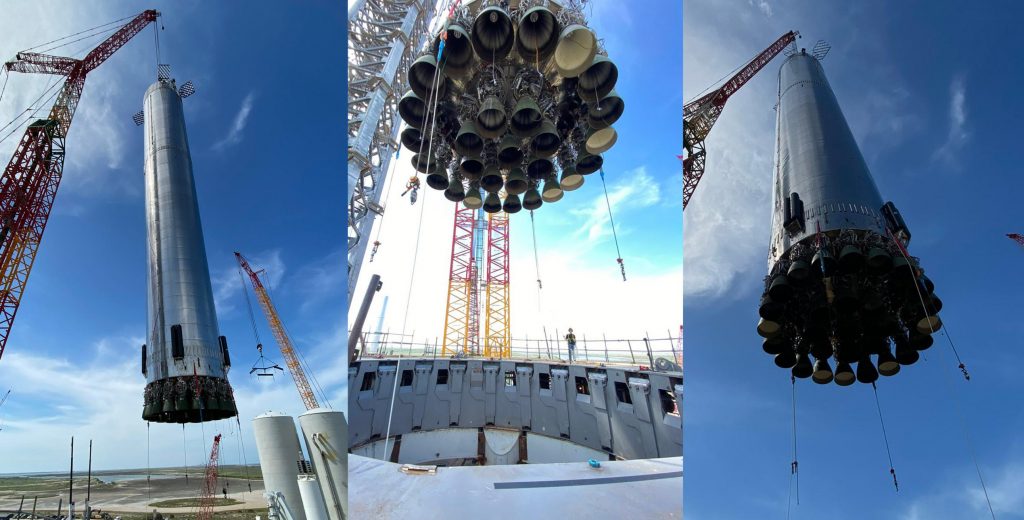Hours after SpaceX outfitted the first orbital Starship prototype with all six of its Raptor engines, the company has installed the vehicle’s nose section, effectively completing its basic structure.
At the same time as teams are now working around the clock to weld Starship S20’s nose and tank sections together, SpaceX attached the first orbital-class Super Heavy – Booster 4 (B4) – to a massive crane that lives at the launch pad. Around 3pm CDT (UTC-5), after allowing a minor storm to pass through the area, Super Heavy B4 lifted free from its transport stand, raised 30-40 meters into the air, and was carefully lowered onto the orbital pad’s ‘launch table.’
Together, Ship 20 and Booster 4 represent both stages of the integrated vehicle that will support Starship’s first orbital test flight – a mission that’s expected to occur before the end of the year. In the interim, a great deal of work remains, but SpaceX is far closer than it’s ever been with both an orbital-class Starship and Super Heavy nearly complete.
Of course, both those rocket stages have plenty of crucial steps to check off before SpaceX can truly consider them ready for flight. Like all Starship prototypes, Ship 20 will need to complete proof testing after assembly is complete. Notably, Ship 20 is the first Starship prototype with mounting points for a full six Raptors, meaning that it will almost certainly be put through an even more rigorous proof test in which hydraulic rams will simulate the thrust of those engines.
In fact, one of SpaceX’s two suborbital launch mounts has already been fitted with a three-ram jig used to test several earlier prototypes and – more importantly – modified with three rams to simulate three Raptor Vacuum engines. The engines installed on Ship 20 on August 3rd are likely just a fit test or practice for the real deal and will need to be uninstalled for said hydraulic ram cryo proof in the near future.
The same might be true for Super Heavy Booster 4, which had 29 Raptor engines installed in 14 hours in a spectacular and unprecedented feat of rocket assembly. At least five of its engines appear to have never been static fired, implying that those engines – at minimum – will likely be removed and sent back to SpaceX’s McGregor development facilities for individual qualification testing before being declared ready for flight.
Ultimately, regardless of when they may or may not be ready to be fired, stacked into a fully integrated Starship rocket, or even launched, the vast majority of orbital test flight hardware is complete or already at the launch pad.

